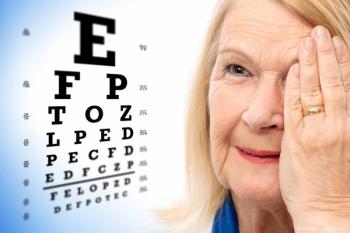
- Modern Retina Fall 2024
- Volume 4
- Issue 3
The current state of gene therapy in managing neovascular macular degeneration
Gene therapy offers a promising alternative by potentially providing long-lasting effects from a single treatment.
Neovascular age-related macular degeneration (nAMD), also known as wet AMD, is a major cause of vision loss among older adults. Traditional treatments involve frequent intravitreal injections of anti-VEGF drugs, which can be burdensome for patients and health care systems. Gene therapy offers a promising alternative by potentially providing long-lasting effects from a single treatment. This article explores the advancements in gene therapy for nAMD, focusing on the work of REGENXBIO, 4D Molecular Therapeutics (4DMT), and Adverum Biotechnologies.
REGENXBIO’s ABBV-RGX-314
In partnership with AbbVie, REGENXBIO is at the forefront of gene therapy for nAMD with its investigational therapy ABBV-RGX-314. ABBV-RGX-314 utilizes an adeno-associated virus (AAV8) vector to deliver a gene encoding for a monoclonal antibody fragment that neutralizes VEGF activity. The therapy aims to provide sustained suppression of VEGF-A, reducing and potentially eliminating the need for frequent injections.
A recent phase 1/2a trial of ABBV-RGX-314 has shown promising results. Subretinal delivery of the therapy was well tolerated, with most patients not requiring supplemental anti-VEGF injections for up to 2 years.1 The primary outcomes indicated stable or improved best-corrected visual acuity and reduced central retinal thickness in participants. Notably, there were minimal adverse effects, with no significant immune responses observed.1 Results from this study (NCT03066258) informed the pivotal trials ATMOSPHERE (phase 2/3; NCT04704921) and ASCENT (phase 3; NCT05407636), which are ongoing in the US and globally and will target enrollment of 1200 patients.
REGENXBIO is also exploring suprachoroidal delivery of ABBV-RGX-314 in its phase 2 AAVIATE study (NCT04514653). This method could offer a less invasive alternative to subretinal injection, potentially making the treatment more accessible.
4DMT’s 4D-150
4DMT is developing 4D-150, a dual-transgene intravitreal gene therapy for nAMD (Figure 1). 4D-150 employs an evolved retinotopic AAV vector to deliver a therapeutic transgene encoding aflibercept, a recombinant protein that inhibits VEGF-A, VEGF-B, and placental growth factor, and a microRNA sequence that inhibits intracellular expression of VEGF-C (Figure 2).
Interim results from the phase 1/2 PRISM clinical trial (NCT05197270) demonstrated that 4D-150 was well tolerated and resulted in durable clinical activity in patients with nAMD.2 Evaluation of outcomes 24 weeks after intravitreal administration of 4D-150 3 × 1010 vector genomes per eye to individuals with severe disease activity showed stable visual acuity, sustained reduction in central subfield thickness (CST), and stabilization of CST fluctuations compared with bimonthly aflibercept.3 In addition, the mean annualized number of anti-VEGF injections was reduced by 89% compared with the prior 12 months. Notably, there were no 4D-150–related serious adverse events and no clinically significant or recurrent intraocular inflammation.
Adverum’s ixoberogene soroparvovec (Ixo-vec, formerly known as ADVM-022)
Adverum Biotechnologies is advancing ixo-vec, an intravitreal gene therapy designed to provide sustained expression of an anti-VEGF protein (Figure 3). Ixo-vec utilizes an AAV.7m8 vector to deliver a gene encoding for aflibercept, a well-established anti-VEGF therapy (Figure 4).
In the phase 1 OPTIC trial (NCT03748784), ixo-vec has shown a favorable safety profile and significant efficacy. Patients treated with ixo-vec required fewer supplemental anti-VEGF injections, and many achieved sustained improvements in vision and retinal thickness over extended follow-up periods. This suggests that ixo-vec could significantly reduce the treatment burden for patients with nAMD.4 Low doses of ixo-vec combined with enhanced corticosteroid prophylaxis regimens are under evaluation in the phase 2 LUNA trial (NCT05536973), designed to select the best dose and prophylaxis for phase 3.
The Broader Landscape and Future Directions
The advancements by REGENXBIO, 4DMT, and Adverum reflect a trend in ophthalmology where gene therapy is increasingly seen as a viable solution to the limitations of current treatments for nAMD. These therapies aim to reduce the frequency of treatments and promise to improve patient outcomes by providing more consistent and long-lasting therapeutic effects.
Conclusion
Gene therapy for nAMD represents a significant advancement in the treatment of this debilitating condition. REGENXBIO’s RGX-314, 4DMT’s 4D-150, and Adverum’s ixo-vec lead the charge with innovative approaches that promise to alleviate the treatment burden and improve patient outcomes. In addition to these established programs, a growing number of phase 1 programs have been activated recently, indicating a solid pipeline of potential therapies. Notable trials include IDLV (NCT05099094) from Shanghai BDgene Co, Ltd; EXG102-031 (NCT05903794) from Exegenesis Bio; HG202 (NCT06031727) from HuidaGene Therapeutics Co, Ltd; and KH631 (NCT05672121) from Chengdu Origen Biotechnology Co, Ltd.5
These trials highlight the concerted efforts across the industry to explore and establish gene therapy as a viable option for patients with retinal disorders. Continued research and clinical trials will be crucial in determining the long-term efficacy and safety, potentially transforming the standard of care for patients with nAMD.
Gene therapy holds the potential to enhance the quality of life for individuals affected by this condition by reducing the need for frequent injections and providing sustained benefits. As these therapies progress through clinical trials, they bring hope for a future where vision loss from nAMD can be more effectively managed and potentially prevented. •
References
1. Campochiaro P, Avery R, Brown DM, et al. Gene therapy for neovascular age-related macular degeneration by subretinal delivery of RGX-314: a phase 1/2a dose-escalation study. Lancet. 2024;403(10436):1563-1573. doi:10.1016/S0140-6736(24)00310-6
2. Khanani AM, Hu A, Eichenbaum DA, et al. Interim results from the PRISM randomized phase 2 dose expansion trial evaluating 4D-150 in high anti-VEGF need individuals with neovascular (wet) age-related macular degeneration. Invest Ophthalmol Vis Sci. 2024;65(7):4356.
3. Khanani AM, Hu A, Eichenbaum DA, et al. Interim results from the PRISM randomized phase 2 dose expansion trial evaluating 4D-150 in high anti-VEGF need individuals with neovascular (wet) age-related macular degeneration. Presented at: Association for Research in Vision and Ophthalmology Annual Meeting 2024; May 8, 2024; Seattle, WA. Poster A0075.
4. Khanani AM, Boyer DS, Wykoff CC, et al. Safety and efficacy of ixoberogene soroparvovec in neovascular age-related macular degeneration in the United States (OPTIC): a prospective, two-year, multicentre phase 1 study. EClinicalMedicine. 2023;67:102394. doi:10.1016/j.eclinm.2023.102394
5. Finocchio L, Zeppieri M, Gabai A, Toneatto G, Spadea L, Salati C. Recent developments in gene therapy for neovascular age-related macular degeneration: a review. Biomedicines. 2023;11(12):3221. doi:10.3390/biomedicines11123221
Veeral Sheth, MD, MBA, FASRS, FACS
e: vsheth@uretina.com
Sheth is a partner and director of clinical trials at University Retina in Chicago, Illinois.
Articles in this issue
about 1 year ago
A great leap forward in ophthalmic drug delivery?about 1 year ago
The sights of Stockholmabout 1 year ago
Higher molar dose in the real world and clinical trialsabout 1 year ago
Spotlight on GA: Promoting early detection and treatmentabout 1 year ago
The unique role of the retina optometristabout 1 year ago
The future of retina careNewsletter
Keep your retina practice on the forefront—subscribe for expert analysis and emerging trends in retinal disease management.













































